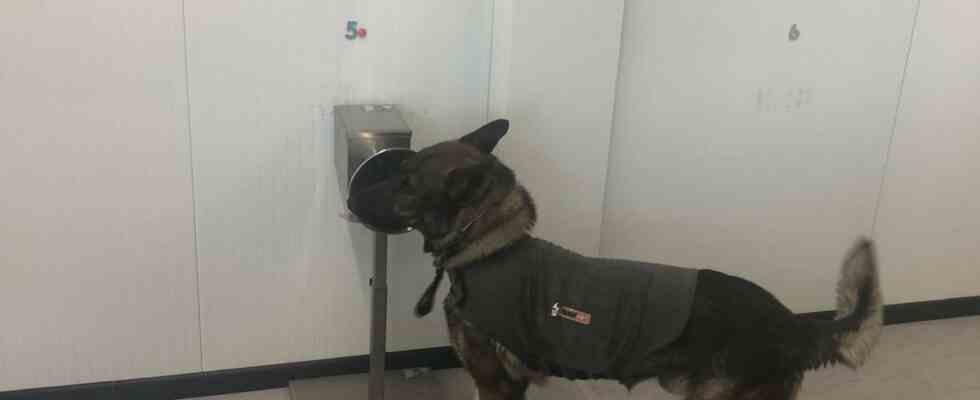What if dog flair could be a tool for detecting Covid 19? In January 2021, the Cynocov study coordinated by the CHU of Bordeaux, associated with Ceva animal health, the first French veterinary laboratory, was launched to explore this avenue. About a year ago, dogs from the SDIS or the gendarmerie were training in Libourne, on the Céva site. This Wednesday evening, the preliminary results of the Cynocov pilot study were presented, after having focused on four civil society pairs because their specialized counterparts were no longer available. The first trends confirm great canine skills in this area.
300 study participants
Between the end of February and mid-June, four dogs supervised by canine educators were trained to mark when they were in the presence of the Covid-19 virus. On each of the 300 human participants in the study (100 positive and 200 PCR negative), sweat was taken quickly, lasting a few seconds, from the back of the neck and under the armpits. And, longer samples, of three minutes, were also taken under the armpits. “The samples were drawn by lot to make olfactory detection lines”, explains Doctor Thierry Pistone, who works in the infectious and tropical diseases unit of the Bordeaux University Hospital.
According to the first trends, the reliability of virus detection is 80% for samples taken quickly and it progresses above 90% for the longest. “We are rather reassured to see that the dogs have performances that are close to the PCR, even if it is not 100%”, underlines Thierry Pistone. He points out that at 80%, rapid tests handily beat antigen tests on asymptomatic people, which have a detection reliability of only 50-60%.
Useful for finding “top-level clusters”
At this time, the trained dogs are completing their evaluations and the study data will be consolidated by the end of July. “The High Public Health Council will meet this summer to discuss a possible national strategy around Covid screening by canine brigades, explains Thierry Pistone. We give him data, especially on rapid samples, so that he can make his decision. »
The canine brigade trained in detecting the canine would be useful on “a search for first-level clusters”, according to this doctor, for example in a retirement home or a nursery school. The dogs sniff the samples taken beforehand and not the people themselves. This screening would not be intended to replace the PCR but could make a first sorting and encourage those who are “marked” by the dogs to carry out a test in addition. The Ministry of Health should then consider releasing funds for new canine experts to be trained.

